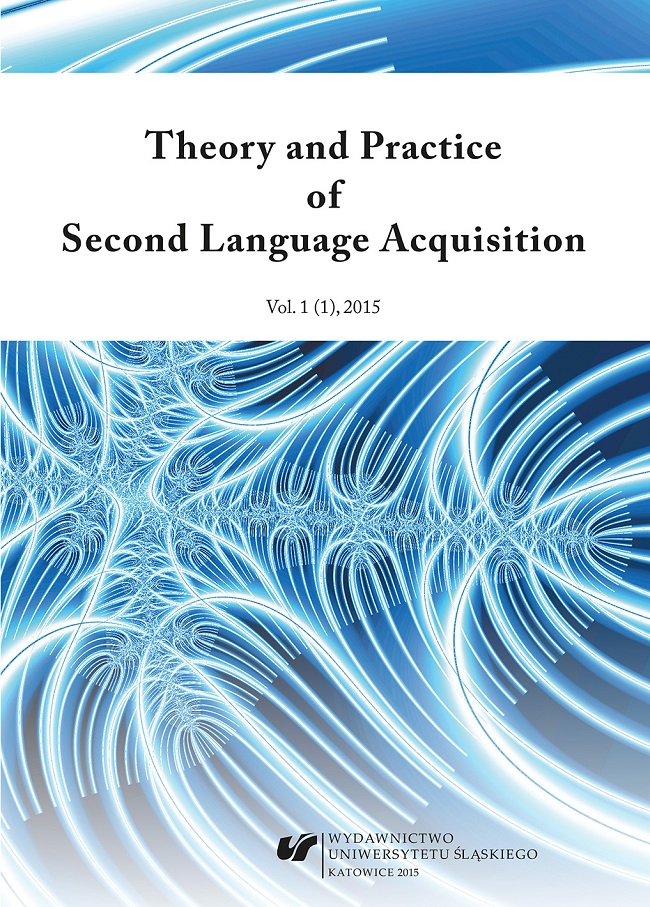Athanasopoulos, P. (2011a) Linguistic relativity in SLA. Thinking for speaking (book review). International Journal of Bilingual Education and Bilingualism 14(5): 621-625.
Google Scholar
Athanasopoulos, P. (2011b) Cognitive restructuring in bilingualism. In A. Pavlenko (ed.) Thinking and Speaking in Two Languages (pp. 29-65). Bristol: Multilingual Matters.
Google Scholar
Bylund, E. (2011) Language-specific patterns in event conceptualization: Insights from bilingualism. In A. Pavlenko (ed.) Thinking and Speaking in Two Languages (pp. 108-142). Bristol: Multilingual Matters.
Google Scholar
Carroll, J. B. (1956) Introduction. In J.B. Carroll (ed.) Language, Thought, and Reality. Selected Writings of Benjamin Lee Whorf (pp. 1-34). Cambridge, Massachusetts: The M.I.T. Press.
Google Scholar
Casasanto, D. (2008) Who’s afraid of the big bad Whorf? Crosslinguistic differences in temporal language and thought. Language Learning 58: Suppl.1: 63-79.
Google Scholar
Cook, V. (2011) Relating language and cognition: The speaker of one language. In V. Cook and B. Bassetti (eds) Language and Bilingual Cognition (pp. 3-22). New York and Hove: Psychology Press.
Google Scholar
Cook, V. and Bassetti. B. (2011) Relating language and cognition: The second language user. In V. Cook and B. Bassetti (eds.) Language and Bilingual Cognition (pp. 143-190). New York and Hove: Psychology Press.
Google Scholar
Gendron, M., Barsalou, L., Lindquist, K.A. and Feldman B. L. (2012) Emotion words shape emotion percepts. Emotion 12 (2): 314-325.
Google Scholar
Goddard, C. (2003) Whorf meets Wierzbicka: Variation and universals in language and thinking. Language Sciences 25: 393-432.
Google Scholar
Han, Z. and Cadierno, T. (2010) Preface. In Z. Han and T. Cadierno (eds.) Linguistic Relativity in SLA. Thinking for Speaking (pp. xi-xv). Clevedon, UK: Multilingual Matters.
Google Scholar
Kramsch, C. (2004) Language, thought and culture. In A. Davis and C. Elder (eds.) Handbook of Applied Linguistics (pp. 235-261). Oxford: Blackwell Publishing.
Google Scholar
Lakoff, G. (1987) Women, Fire and Dangerous Things: What Categories Reveal about the Mind. Chicago: Chicago University Press.
Google Scholar
Latkowska, J. (2009) Conceptual transfer from a bilingual perspective: Research trends and suggestions. Linguistica Silesiana Vol. 30: 239-252.
Google Scholar
Latkowska, J. (2013) The Language-Cognition Interface in Bilinguals: An evaluation of the Conceptual Transfer Hypothesis. Katowice: University of Silesia Press.
Google Scholar
Levinson, S. (2003) Space in Language and Cognition. Cambridge: Cambridge University Press.
Google Scholar
Lucy, J. (2004) Language, culture and mind in comparative perspective. In M. Achard and S. Kemmer (eds.) Language, Culture and Mind (pp. 1-22). Stanford, CA: CSLI Publications.
Google Scholar
Malt, B. C., Sloman, S., Gennari, S., Shi, M., and Wang.Y. (1999) Knowing versus naming: Similarity and the linguistic categorization of artifacts. Journal of Memory and Language 40: 230-262.
Google Scholar
Malt, B. and Ameel, E. (2011) The art and science of bilingual object naming. In A. Pavlenko (ed.) Thinking and Speaking in Two Languages (pp. 170-197). Clevedon, UK: Multilingual Matters.
Google Scholar
Pavlenko, A. (2014) The Bilingual Mind and what it tells us about language and thought. Cambridge: Cambridge University Press.
Google Scholar
Pavlenko, A. and Malt, B. (2011) Kitchen Russian: Cross-linguistic differences and first-language object naming by Russian-English bilinguals. Bilingualism: Language and Cognition 14(1): 19-45.
Google Scholar
Pederson, E. (2007) Cognitive linguistics and linguistic relativity. In D. Geeraerts and Cuyckens, H. (eds.) The Oxford Handbook of Cognitive Linguistics (pp. 1012-1245). Oxford: Oxford University Press.
Google Scholar
Slobin, D. I. (1996) From “thought and language” to ”thinking for speaking.” In J. J. Gumperz and S. C. Levinson (eds.) Rethinking Linguistic Relativity (pp. 70-96). Cambridge: Cambridge University Press.
Google Scholar
Slobin, D. I. (2003) Language and thought on line: Cognitive consequences of linguistic relativity. In D. Gentner and S. Goldin-Meadow (eds.) Language and Mind. Advances in the Study of Language and Though, (pp. 157-192). Cambridge, Massachusetts: The MIT Press.
Google Scholar
Slobin, D. I. (2004) The many ways to search for a frog: Linguistic typology and the expression of motion events. In S. Strömqvist and L. Verhoeven (eds.) Relating Events in Narrative: Vol. 2. Typological and Contextual Perspectives (pp. 219-257). Mahwah, NJ: Lawrence Erlbaum.
Google Scholar
Slobin, D. I. (2005) Linguistic representations of motion events: What is signifier and what is signified? In C. Maeder, O. Fischer, and W. J. Herlofsky (eds.) Iconicity Inside Out: Iconicity in Language and Literature 4 (pp. 307-322). Amsterdam/Philadelphia: John Benjamins.
Google Scholar
Stutterheim, Ch. von (2003) Linguistic structure and information organization: The case of very advanced learners. EUROSLA Yearbook 3:183-206.
Google Scholar
Whorf, B. L. (1956) On psychology. In J.B. Carroll (ed.) Language, Thought, and Reality. Selected Writings of Benjamin Lee Whorf (pp. 40-42). Cambridge, Massachusetts: The M.I.T. Press.
Google Scholar
Whorf, B. L. (1956) A linguistic consideration of thinking in primitive communities. In J.B. Carroll (ed.) Language, Thought, and Reality. Selected Writings of Benjamin Lee Whorf (pp. 65-86). Cambridge, Massachusetts: The M.I.T. Press.
Google Scholar
Whorf, B. L. (1956) The relation of habitual thought and behavior to language. In J.B. Carroll (ed.) Language, Thought, and Reality. Selected Writings of Benjamin Lee Whorf (pp. 134-159). Cambridge, Massachusetts: The M.I.T. Press.
Google Scholar
Whorf, B. L. (1956) Science and linguistics. In J.B. Carroll (ed.) Language, Thought, and Reality. Selected Writings of Benjamin Lee Whorf (pp. 207-219). Cambridge, Massachusetts: The M.I.T. Press.
Google Scholar
Whorf, B. L. (1956) Linguistics as an exact science. In J.B. Carroll (ed). Language, Thought, and Reality. Selected Writings of Benjamin Lee Whorf (pp. 220-231). Cambridge, Massachusetts: The M.I.T. Press.
Google Scholar
Whorf, B. L. (1956) Languages and logic. In J.B. Carroll (ed.) Language, Thought, and Reality. Selected Writings of Benjamin Lee Whorf (pp. 233-245). Cambridge, Massachusetts: The M.I.T. Press.
Google Scholar
Whorf, B. L. (1956) Language, mind, and reality. In J.B. Carroll (ed.) Language, Thought, and Reality. Selected Writings of Benjamin Lee Whorf (pp. 246-270). Cambridge, Massachusetts: The M.I.T. Press.
Google Scholar
Whorf, B.L. and G.L. Trager (1996) The Yale Report. In P. Lee. The Whorf Theory Complex, 251-280. Amsterdam/Philadelphia: John Benjamins.
Google Scholar
Wierzbicka, A. (1997) Understanding Cultures through their Key Words. Oxford: Oxford University Press.
Google Scholar



 10.31261/tapsla
10.31261/tapsla